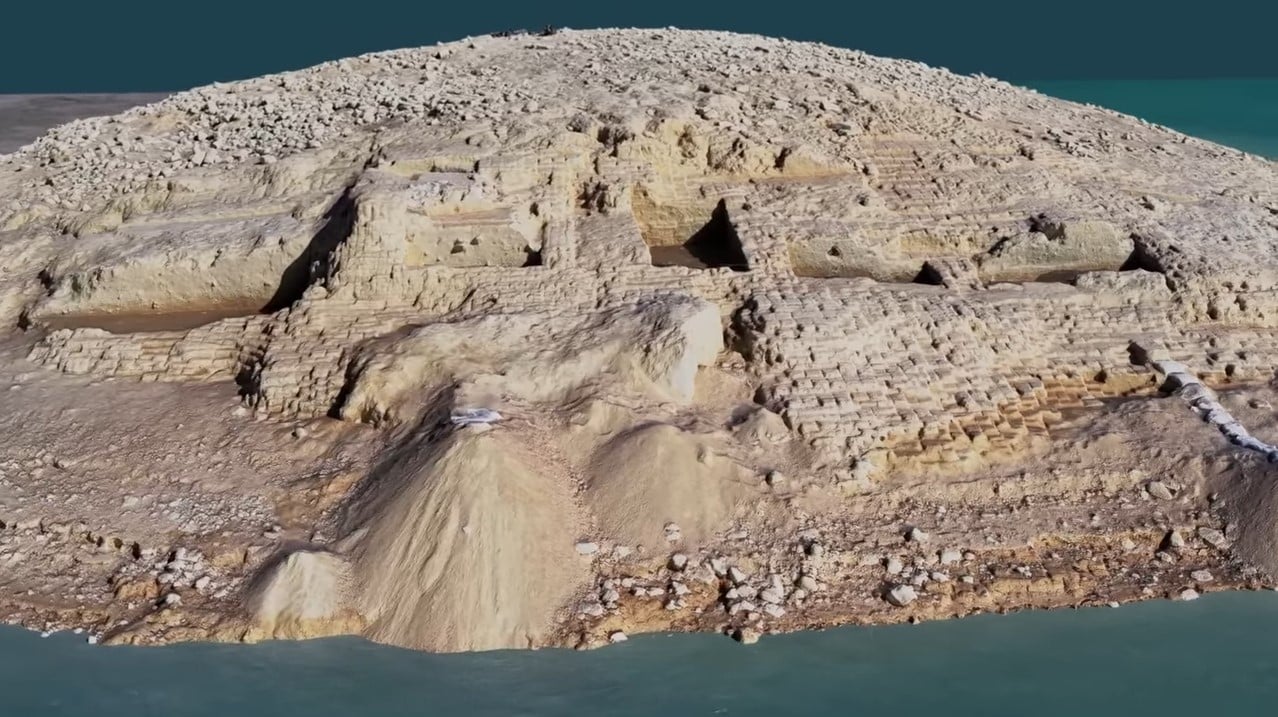A drought that dried up the water from Iraq’s Mosul Dam reservoir, exposed an ancient city palace in Iraq. Scientists that discovered it were able to date it back to the Bronze Age, which sheds light on homes humans had back in that period.
The discovery of the ancient city palace is of vast importance to archaeologists. The city reveals a palace with well-preserved walls that have heights of 22 feet. Also, the palace has chambers that once were painted with colorful murals, according to the accompanying study’s statement.
The city from the Bronze age dates to the time of the Mittani Empire, an ancient kingdom located in the Near East and ruled parts of Syria and northern Mesopotamia from the 15th to the 14th century B.C. The archaeological site where the palace was unearthed was named Kemune. It’s interesting to note that there are only three other sites from this period that hide Mittani palaces, but all of them are found in outer locations of the empire. However, the newly-discovered palace provides information about life at the heart of the kingdom.
When the Mosul Dam was affected by a severe drought in 2010, scientists were able to see the submerged remains of the palace but “we couldn’t excavate here until now,” Hasan Ahmed Qasim, co-leader of the excavation and an archaeologist with the Kurdistan Archaeology Organization (KAO) in Duhok, Iraq, said in a statement.
The ancient city palace in Iraq was located only 65 feet from the Tigris, with a sloping terrace wall that supported the palace’s western side, which allowed the citizens of the palace to overlook the river. Scientists that conducted the survey of the palace’s ruins say that the rest of the city is located on the north side.
The team was able to partially excavate eight rooms. They revealed a lot of details, such as slabs of fired brick. The palace sported paintings, and while they have mostly washed off, they retain traces of vibrant colors such as red and blue. Scientists believe that palaces such as the ones that belonged to the Mittani Empire were decorated with colorful murals.
Scientists also found in the palace rooms 10 clay tablets which were engraved with Mittani cuneiform, which is one of the earliest forms of writing. The experts from the University of Heidelberg in Germany are working on translating the tablets, and their early translations suggest that the ancient city palace in Iraq was likely known as the ancient city of Zakhiku.
According to the statement, references that point back to the city can be tracked back to around 1800 B.C, which suggests that the city Zakhiku was located next to the Tigris River Valley and stood for at least four centuries.





